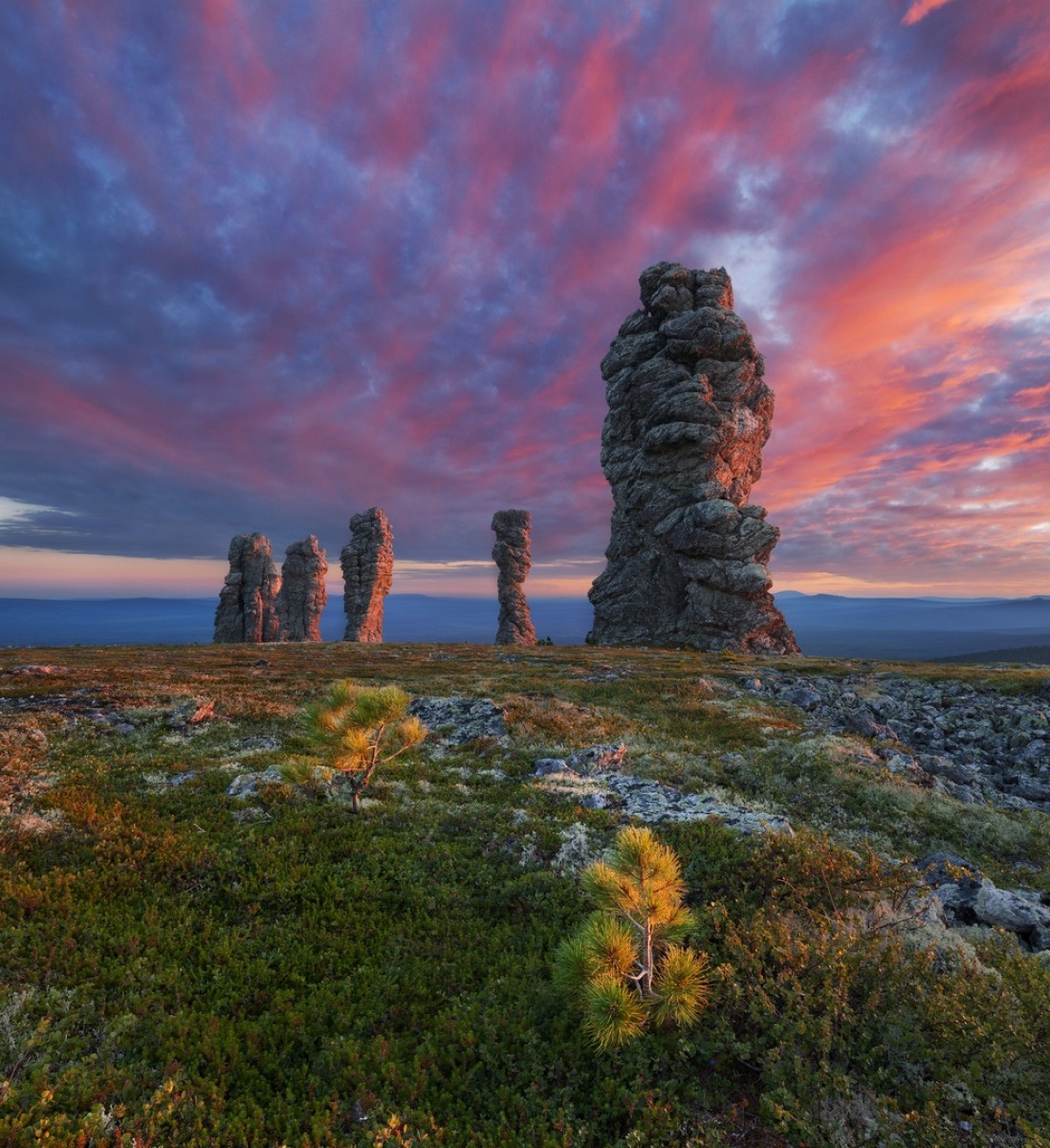
A place of power.
Manpupuner
There are as many as 20 districts within the Republic of Komi, and each of them could easily present its own top 10 natural attractions that tourists would find interesting to look at. These are rivers with quiet backwaters, and dense forests giving shelter to Red Book plants, and rocky spurs of ancient mountains mottled with caves. Between the southern and northern points of the region, within the area of up to 416,000 square kilometers, real miracles, the treasures of Komi are scattered.
One of them which is generally recognized is the Manpupuner rock formations; located in the Pechora-Ilych Nature Reserve, in 2008 they were voted as the number six of the Seven wonders of Russia.
The legend
The seven stone pillars of up to 42 meters high, popularly nicknamed “the Bolvans”, inspired legends from time immemorial. One of the most well-known ones has been told by the Mansi people. According to it, once upon a time there was a stone and crystal citadel nearby Manpupuner. To this day its ruins, called Torre-Porre-Iz, can be seen in the distance from the plateau. There was a head in the citadel, and he had a beautiful daughter. And nearby them, there lived a wild tribe. One day, its leader heard about the daughter of the citadel’s head and sent his matchmakers to her. But the girl refused him. Then the tribe’s leader got angry and went to war against the citadel. The girl fled to the south, towards Manpupuner. From afar, her brother Tych-Gyrym heard her cries and rushed to help. After reaching his sister, he covered her with his golden shield. It reflected the sun’s rays on the pursuers, and they turned into stone pillars.
A bit of scientific facts
Geologists have established that the age of the rocks, from which the pillars are composed, is not older than 505 million years. For the most part, they are solid sericite-quartzite schists. The surfaces of the pillars are covered with various types of lichens, and only in a few areas one can see the structural and textural features of the rocks. Researchers attribute the rocks of the remains to the Telposs Formation of the Late Cambrian/Early Ordovician age.
A journey to Manpupuner
Tourists, however, are enchanted with Manpupuner not because of it being so geologically unique. They love it for its indescribably beautiful views, its silence and the opportunity to be alone with themselves it provides to them. Even the photos taken on the plateau are impressive. As for beholding the pillars by oneself, it is always an unforgettable experience. According to those who have had it, realizing the greatness of the place of power often brings tears to people’s eyes. However, there is also another reason why travelers find Manpupuner so attractive. It is its difficult accessibility: the tourist traffic to the plateau is regulated by the capacity of the Pechora-Ilych Nature Reserve.
Getting to Manpupuner quickly and easily is possible by air. A helicopter lands on the pad near the instructors' house, and a tourist group is escorted from it to the pillars along the eco-trail. After an hour and a half of contemplation of the stone giants and mental communication with them, travelers take souvenir photos and set off for their return trip. As one can guess, this is the most expensive way to see Manpupuner.
A middle ground in achieving the goal of meeting the Bolvans is offered by the Irbis company. In winter, tourists escorted by an experienced guide get to Manpupuner by snowmobiles; on their way to the plateau, they make three overnight stops at cordons and a guest house on the Vologodskaya gran of the Pechora-Ilych Nature Reserve. In summer, a journey begins from an airboat run from the village of Komsomolsk-on-Pechora to the upper reaches of the Pechora river. After an overnight at a cordon, tourists make one more water trip that lasts until noon and then continue their way on foot with light backpacks. The hiking part of the route passes through the forest, swamp, stone run and thickets of dwarf birch. After one more overnight, tourists enter the path leading to Manpupuner. And although three hours in the company of the stone giants feel like three minutes, the memories of them remain for a lifetime. For getting back, the same route is used. Thus, the tour takes several days, but is suitable even for inexperienced tourists and children.
VIEW TOURS